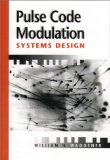Difference Between PCM and Bit Stream
Pulse Code Modulation digitally signifies an analogue signal. This signal is sampled regularly at precise intervals. This signal is then quantized into numeric coding, usually binary coding. PCM is most usually found in telephone systems, keyboard pianos dating back to the 1980’s, audio found in computers, CD ‘red book’ formats, and digital video.
Bit stream is, basically, a time series of bits. That is, it is a sequence of bits (binary coding of information used in computing and telecommunications) usually measured in succession, and spaced out in uniform time intervals.
Prior to digitization, an analogue signal may be processed via amplitude compression. Once digitized, the PCM signal is further processed through digital data compression. There are certain types of PCM that use a combination of both signal processing and coding. The newest implementation of the PCM applies this combination in the digital domain.
Bit streams are usually used in telecommunications and computing (especially within the creation of code). SDH communications, that is Synchronous Optical Networking, transports synchronous bit streams. When a bit stream has been stored in a computer, a file gets created, signifying the bit stream.
PCM can be defined in two categories: Return-to-Zero (RZ) or Non-Return-to-Zero (NRZ). In order for NRZ to actually synchronise, there cannot be lengthy strands of sequences containing identical symbols – a long string of ones and zeros, for example. For those systems that use binary coding (that is strings of zeros and ones) the density of the 1 symbol is known as ones-density.
Bit stream is a term mostly used to describe the configuration of data that is to be loaded into a field programmable gate array (or FPGA). This is an integrated circuit that is intended to be configured after it has been manufactured by the customer or designer. This usage of the phrase ‘bit stream’ could possibly be a direct result of the practice of configuring the FPGA via a serial bit stream (either from a serial PROM or a flash chip).
In terms of PCM, pulse refers to pulses found in the transmission line. A common understanding of the origin of this meaning comes from techniques evolving in conjunction with two analogue methods: Pulse Width Modulation and Pulse Position Modulation (information meant to be encoded is represented by signal pulses of varying width or position).
Summary:
1. PCM digitally signifies an analogue signal; bit streams are stored in a computer, and a file is created to signify it.
2. PCM can be defined as Return-to-Zero or Non-Return-to-Zero; bit streams describe data configuration loaded into a FPGA.
- Difference Between VC++ and C++ - April 20, 2010
- Difference Between Aluminum and Carbon Arrows - April 15, 2010
- Difference Between SFTP and SCP - April 15, 2010

